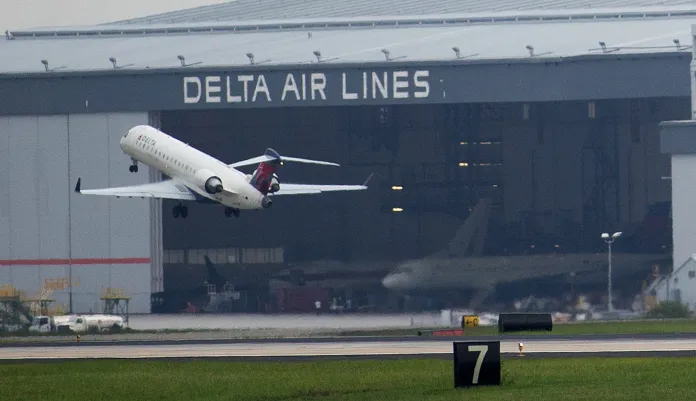Chilling Video: Alleged Footage from Inside Doomed Plane Shows Critical Power Failure
A recent video circulating on social media suggests that the Boeing 787-8 dreamliner that crashed shortly after takeoff in India was experiencing multiple problems prior to the incident. This video,which has not been verified,reportedly shows issues within the aircraft during its flight from Delhi to Ahmedabad. A passenger on an earlier flight claimed to have noticed malfunctioning air conditioning and non-functional cabin screens,sharing this information online and urging the airline to contact him for more details.
The plane crashed approximately 30 seconds after takeoff,with initial reports indicating it may have experienced a double engine failure,possibly due to a bird strike. Experts have stated that a loss of thrust could cause such an incident and highlighted the importance of investigating various potential factors, such as fuel contamination and proper aircraft configuration. An official investigation into the crash is expected to explore these areas to determine the cause behind this tragic accident, which involved 242 individuals onboard.
A video making the rounds of social media advances the claim that the Boeing 787-8 Dreamliner that crashed in India on Thursday was experiencing multiple problems long before it crashed
The video was not verified as of Friday.
The video claimed to show conditions aboard the jet when it flew from Delhi to Ahmedabad, where it would later crash, according to the New York Post.
Chilling video shows ‘nothing was working’ on Air India flight just before crash. pic.twitter.com/gVJIQVS4As
— Daily Mail (@DailyMail) June 12, 2025
“I was in the same damn flight 2 hours before it took off from AMD. I came in this from DEL-AMD. Noticed unusual things in the place. Made a video to to @airindia i would want to give more details. Please contact me,” social media user Akash Vatsa wrote on X
“The AC is not working at all. And, as usual, your TV screens are also not working, neither is this button for calling the cabin crew,” Vatsa said, according to the Post.
I was in the same damn flight 2 hours before it took off from AMD. I came in this from DEL-AMD. Noticed unusual things in the place.Made a video to to @airindia i would want to give more details. Please contact me. @flyingbeast320 @aajtak @ndtv @Boeing_In #planecrash #AI171 pic.twitter.com/TymtFSFqJo
— Akash Vatsa (@akku92) June 12, 2025
Air India did not reply when the Post asked for comment.
The plane crashed about 30 seconds after takeoff, according to the BBC.
India’s Home Affairs Minister Amit Shah said the plane had 100 tons of fuel for its trip to London when it took off.
Indian officials said a mayday call came almost immediately after takeoff, but the plane did not respond after the initial call, meaning officials do not know what the pilot was reporting.
The plane reached a maximum height of 625 feet then began to descend before it crashed.
“There would have been no time for him to react if he lost both engines,” the BBC quoted one pilot as saying.
WATCH: Air India plane carrying 242 people crashes in Ahmedabad while taking off for flight to London pic.twitter.com/KyLVZaV6i7
— BNO News (@BNONews) June 12, 2025
Sonya Brown, a lecturer in aerospace design at the University of New South Wales, said video of the plane’s crash made it appear to her that it had stalled, according to the Guardian.
“It does look to me like a significant loss of thrust. Thrust effectively makes you go faster, and aircraft lift is proportional to speed squared, so if you don’t have thrust and you lose speed — and radar data suggests after the initial short climb it was losing speed — you can stall,” Brown said, adding that the reason for the loss of thrust is not known.
Jason Knight, a lecturer in fluid mechanics at the University of Portsmouth, said it was likely the engines failed.
“The most likely cause of the crash is a double engine failure. Because the altitude was so low, the pilot would have had very little time to do an emergency landing. The most likely cause of a double engine failure is a bird strike, which would take out the engine,” he said.
Greg Feith, a former investigator at the National Transportation Safety Board, said the investigation into the crash will ask multiple questions in seeking answers, according to The New York Times.
“Did they properly configure the airplane when it took off? What was occurring with them? Was there a loss of thrust?” he asked. “Was there fuel contamination? Fuel starvation where both engines weren’t getting fuel that would have caused a loss of thrust on both engines?”
He said a widely d video raises questions but does not provide answers.
“In the video, you see the landing gear is still down, but the flaps look to be in a relatively up position,” Feith said. “That will have to be examined. Normally on a large aircraft like that, you need to use some level of flap deployment. If the airplane was not properly configured, that can present a performance issue.”
Ben Berman, a safety consultant, said leaving the landing gear down “might have been intentional. It might have been that they had a massive problem right after takeoff, and they may have neglected to raise the gear. We’ll need to know a lot more about the airplane to comment on this intelligently.”
Advertise with The Western Journal and reach millions of highly engaged readers, while supporting our work. Advertise Today.
" Conservative News Daily does not always share or support the views and opinions expressed here; they are just those of the writer."




